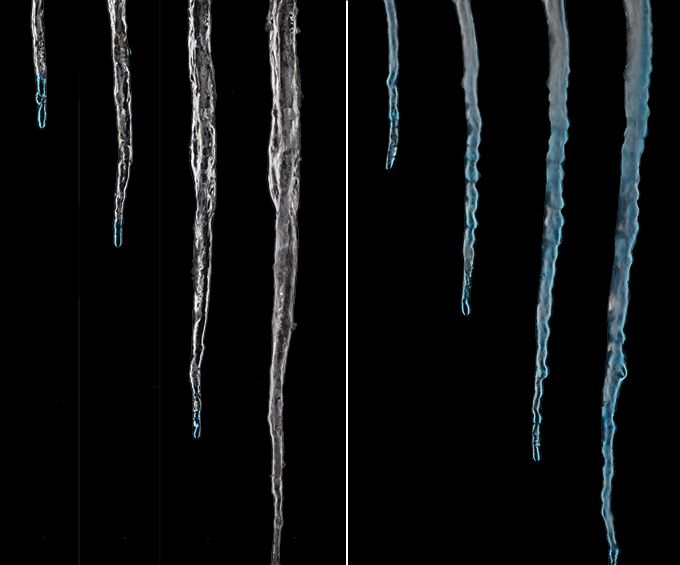Here’s why icicles made from pure water don’t form ripples
A new study explains why icicles made from pure water have irregular shapes rather than the ripples typical of the salty icicles found in nature.

Icicles made from pure water give scientists brain freeze.
In nature, most icicles are made from water with a hint of salt. But lab-made icicles free from salt disobey a prominent theory of how icicles form, and it wasn’t clear why. Now, a study is helping to melt away the confusion.
Natural icicles tend to look like skinny cones with rippled surfaces — the result of a thin film of water that coats the ice, researchers think (SN: 11/24/13). As icicles grow, the film freezes. Any preexisting small bumps in the icicle get magnified into large ripples because the water layer is thinner above the bumps and can freeze more readily. But this theory fails to explain the salt-free variety, which have more irregular shapes reminiscent of drippy candles, says physicist Menno Demmenie of the University of Amsterdam.
So Demmenie and colleagues grew icicles in the lab, adding a blue dye that was visible only when the water was liquid. Salted icicles not only had ripples, but they also were covered in a thin, blue film. Icicles made from pure water had no such film. Only small droplets of blue appeared on those icicles, the team reports in the February Physical Review Applied.
In icicles with salt, the temperature at which the water on the surface freezes is lowered, allowing a liquid layer to coat the entire icicle. Without the salt, icicles must build up drop by drop.

What's Your Reaction?



























































